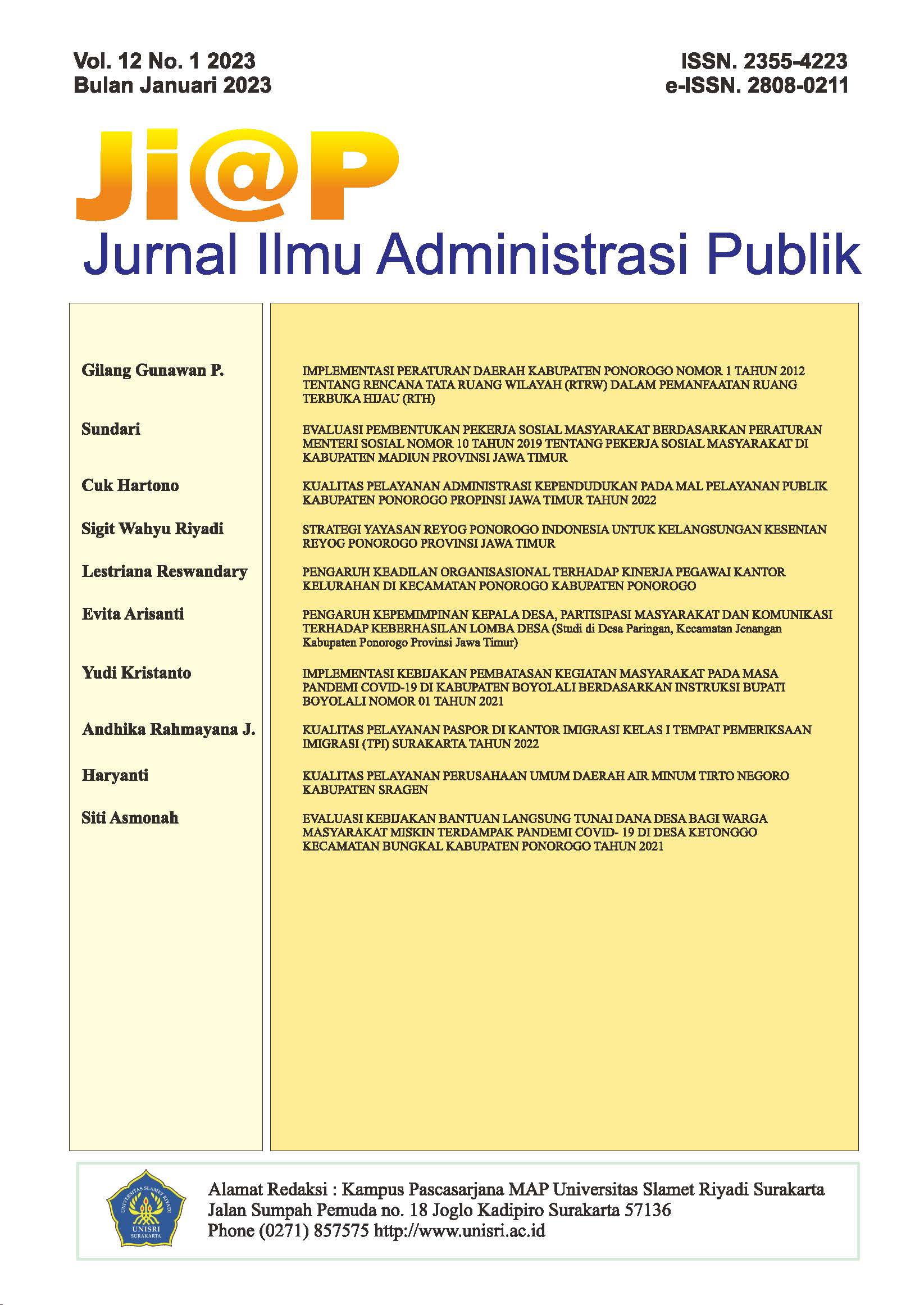IMPLEMENTASI PERATURAN DAERAH KABUPATEN PONOROGO NOMOR 1 TAHUN 2012 TENTANG RENCANA TATA RUANG WILAYAH (RTRW) DALAM PEMANFAATAN RUANG TERBUKA HIJAU (RTH)
DOI:
https://doi.org/10.33061/jp.v12i1.7257Abstract
This study aims to describe the implementation of regional spatial planning
policies in the use of green open spaces in Ponorogo Regency, and describe what
factors influence the implementation of regional spatial planning policies in the
use of green open spaces in Ponorogo Regency.
The type and analysis of data used a descriptive qualitative approach. Sources of
data consist of primary data in the form of direct interviews and secondary data is
data collected from observations and institutional literature related to research.
Data collection techniques using interviews, observation and documentation.
Data analysis techniques with data reduction, data presentation and drawing
conclusions. Test the validity of the data using data source triangulation
techniques and member check.
This study uses the Edward III Implementation theory, the results of the study
show that the implementation of Spatial Planning Policy in the utilization of
Green Open Space in Ponorogo Regency is generally carried out well, things that
have been implemented are realization, socialization, and reports from SKPD
related to the implementation of the Ponorogo Regency Regional Regulation
Number 1 of 2012 concerning Regional Spatial Planning in Utilization of Green
Open Space. Implementation of the Spatial Planning Policy in the use of Green
Open Space in Ponorogo Regency from the communication aspect, in principle
the Regency Government has socialized the city's spatial plan. Aspects of
resources are sufficient, but still lacking in quantity and quality. Aspect of
disposition, policy implementers have quite good characteristics.
Keywords: Implementation, Regulations, Green Open Space
Downloads
Published
How to Cite
Issue
Section
License
Copyright (c) 2023 Gilang Gunawan Putra

This work is licensed under a Creative Commons Attribution-NonCommercial 4.0 International License.
Authors who publish this journal agree to the following terms:
- Authors retain copyright and grant the journal right of first publication with the work simultaneously licensed under a Creative Commons Attribution License that allows others to share the work with an acknowledgement of the work's authorship and initial publication in this journal.
- Authors can separately make additional contractual arrangements for non-exclusive distribution published by the journal (e.g., publish it in a book), with an acknowledgement of its initial publication in this journal.
- Authors are allowed and encouraged to send their work via online (e.g., in the institutional repositories or their website) after published by the journal.













